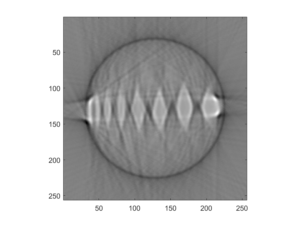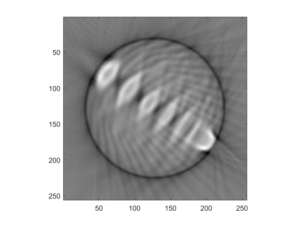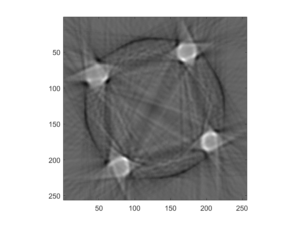Hunter Spivey and Aayush Gupta
This week we finished taking scans with our CT scanner and were able to characterize it’s performance on different phantoms and different settings of fan angle increments. We successfully reconstructed sinograms and images for these different cases, and finished our work with our IR CT. We also were able to make the mixture for the ultrasound phantoms and let it cure and solidify. Since we finished our phantom, we moved onto making our T/R switch for our ultrasound, and got a start soldering the components onto the switch itself.
Phantom 1: 1 Degree Increments

Phantom 1: 2 Degree Increments

Phantom 2: 1 Degree Increments

Hopefully next time we can finish our T/R switch and move onto the other parts of the ultrasound scanner if we have time.
Question:
What happens if you more coarsely or finely sample the fan beam angles?
Answer:
By doubling our fan rotation increment, and therefore cutting the number our projections in half, we noticed a significant drop in resolution of the final image. whereas before we could clearly distinguish the 8 different pegs, the more coarse acquisition was difficult to identify starting at the 6th largest peg. If you need to trade resolution for acquisition time however, and the loss of resolution isn’t important for your intended purpose, then it is a valuable method to increase acquisition speed.
